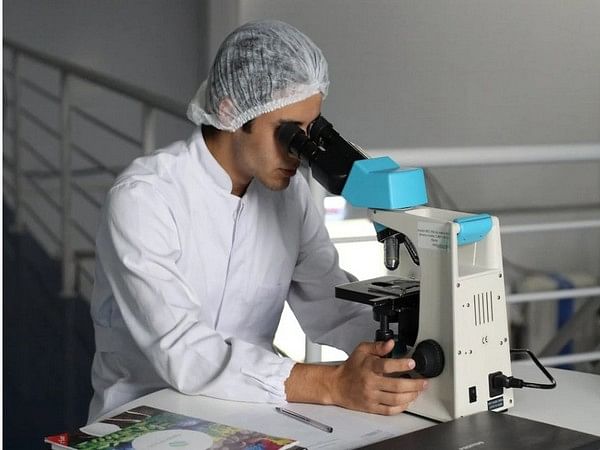New York [US], September 27 (ANI): A cellular signal essential to the development of the skeleton increases during aging to weaken bones, finds a new study in mice.
The study, led by researchers from NYU Grossman School of Medicine, found that blocking the signaling pathway, called Notch, in aging skeletal stem cells caused a “massive increase” in bone mass and restored lost bone-healing ability during aging.
The study results revolve around immature stem cells, which have the capacity to mature into more than one cell type. Bone is among the tissues that keep pools of stem cells on hand into adulthood, ready to mature into replacement cells that maintain healthy tissue and repair broken bones.
Skeletal stem and progenitors cells, or SSCPs, in the bone marrow have the capacity to become either new bone-making cells called osteoblasts or fat-making cells called adipocytes, the researchers say. Past studies have shown that such cells are more likely to become cells that make fat than bone as skeletal tissues age, making bone more vulnerable to fracture. The cellular signals involved, however, had been unclear going into the current work.
Published online September 27 in Bone Research, a Nature journal, the new work, by looking closely at the genes expressed in SSCPs of mice as they aged, found the Notch pathway to become abnormally active, shifting the cells toward the fate that increases fatty degeneration of bone marrow. When the authors genetically engineered mice to lack Nicastrin, a core part of the Notch signaling chain reaction, it returned the stem cells to the bone-making cell pathway, and increased bone formation “even beyond that seen in young mice.”
Notch signaling, woven as it is into so many cellular pathways, is not a good target for drug therapy, but the study authors pinpointed a protein called Ebf3 that carries the Notch signal forward, and which could be targeted by drugs.
“Our findings reveal that Notch in skeletal stem cells becomes abnormal with age, and that blocking it prevents age-related skeletal degeneration,” says corresponding study author Philipp Leucht, MD, PhD, the Raj-Sobti-Menon Associate Professor in the Department of Orthopedic Surgery and Cell Biology at NYU Langone Health. “The reprogramming of adult stem cells as a source of bone-making cells in healing-compromised people has profound therapeutic potential, and we hope to confirm the value in future studies of Ebf3 as a drug target in preventing osteoporosis.”
Aging is known to come with loss of the ability of stem cells to become bone-making cells, with related skeletal deterioration among the most common causes of age-associated impairment. To date, there are no therapeutics to rescue or maintain the bone-making function in aging SSPCs, say the authors. As such, they say it is an imperative to clarify the mechanisms that trigger the bone-to-fat shift in the skeleton to prolong healthy lifespans.
To address this challenge, the research team used a technique called single-cell RNA sequencing of young and aged mouse bones to reveal that Notch signaling becomes elevated in SSPCs during aging. Genetic information is captured in the molecular “letters” of DNA chains, which are converted into RNA snippets on the way to becoming proteins that make up cell signals and structures. Sequencing technologies reveal the order of the genetic letters in healthy function, and the changes linked to diseases, with a newer capability being to look at genetic activity based on RNA profiles in single cells. This provided the research team with a closer view of cellular differences in SSPCs as they aged.
Notch signaling is important to the development of many tissues in the womb, but then is suppressed to enable healthy adult tissue function, Leucht adds. Diseases like cancer, and the aging process, are linked to the abnormal re-activation of developmental processes, where the genetic systems (heterochromatin) that block access to certain genes break down. Thus, the current study’s finding that Notch-related genes were abnormally upregulated could reveal disease mechanisms behind forms of deterioration seen in other tissues and organs.
“As a rising trainee in orthopedic surgery, I am intrigued by the molecular and cellular machinery that governs skeletal stem cell fate,” says first author Lindsey Remark, MD, PhD, a graduate student in the Leucht laboratory. “Our newly gained knowledge opens potential therapeutic avenues to overcome age-related bone loss by manipulating down-stream effectors for Notch signaling in these stem cells.” (ANI)
This report is auto-generated from ANI news service. ThePrint holds no responsibility for its content.



